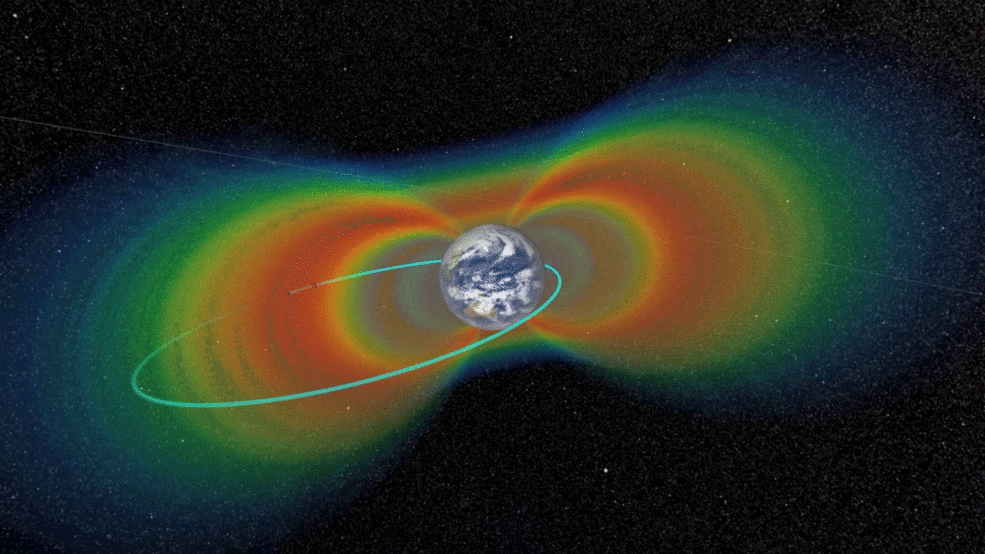This content has been archived. It may no longer be relevant

Credits: NASA Goddard’s Scientific Visualization Studio
The Van Allen Probes spend most of their orbit within Earth’s radiation belts: doughnut-shaped bands of energized particles — protons and electrons — trapped in Earth’s magnetic field. These fast-moving particles create radiation that can interfere with satellite electronics and could even pose a threat to astronauts who pass through them on interplanetary journeys. The shape, size and intensity of the radiation belts changes in response to solar activity, which makes predicting their state difficult.
Originally designated as a two-year mission — based on predictions that no spacecraft could operate much longer than that in the harsh radiation belts — these rugged spacecraft have operated without incident since 2012, and continue to enable groundbreaking discoveries about the Van Allen Belts.
“The Van Allen Probes mission has done a tremendous job in characterizing the radiation belts and providing us with the comprehensive information needed to deduce what is going on in them,” said David Sibeck, mission scientist for the Van Allen Probes at NASA’s Goddard Space Flight Center in Greenbelt, Maryland. “The very survival of these spacecraft and all their instruments, virtually unscathed, after all these years is an accomplishment and a lesson learned on how to design spacecraft.”
Each spacecraft will be moved to a new, lower perigee of about 190 miles above Earth through a series of five two-hour engine burns. Because the Van Allen Probes spin while in orbit, the dates of these burns had to be chosen carefully. The needed geometry happens just once or twice per year: for spacecraft B, that period falls Feb. 12-22 of this year, and for spacecraft A, it’s March 11-22.
The Space Sciences Lab at UC Berkeley has been proud to be part of this great mission.
Read the Complete Story

